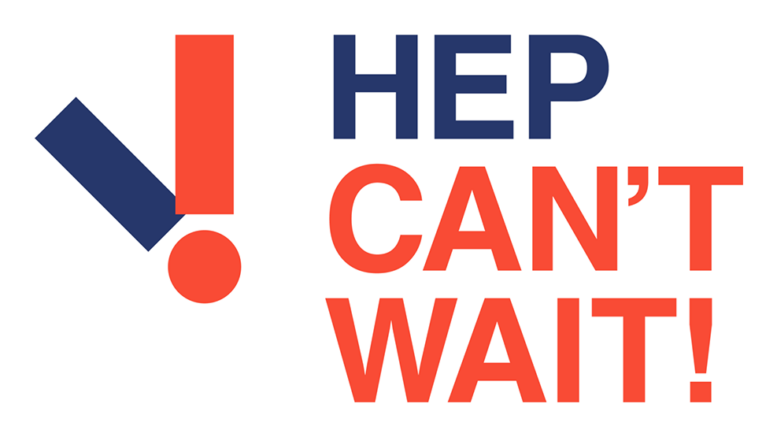By Jeremy Appel, Local Journalism Initiative Reporter
(ANNews) – On World Hepatitis Day, the Alberta Hepatitis Elimination Network (AHEN) hosted an information session on the opportunities and challenges for eliminating viral hepatitis infection, noting the virus’s disproportionate impact on Indigenous people.
In 2016, the World Health Organization (WHO) pledged to eliminate viral hepatitis infection as a public health threat by 2030, which Canada’s federal government endorsed. However, each province is responsible for its own hepatitis elimination strategy.
When Canada signed on to the WHO’s goal, it identified key at-risk populations to focus its elimination efforts on — people who use drugs, people who are incarcerated, gay and bisexual men who have sex with men, immigrants, people who were born from 1945 to 1975, and Indigenous people.
The July 28 event, dubbed “Hep Can’t Wait,” featured AHEN founder Alexa Thompson, a University of Alberta PhD candidate researching hepatitis health care, Dr. Kate Dunn, a member of Mississauga First Nation who works to make hepatitis C treatment more accessible to people in Indigenous and remote communities, Simmone D’souza, a University of Calgary PhD candidate researching new therapies for hepatitis B, and Mercedes Russell, a member of Kainai First Nation who serves as a spokesperson for people living with hepatitis C.
The most common forms of hepatitis are hepatitis B (HBV) and hepatitis C (HCV), which both can lead to liver cancer and death if left untreated. While HBV is vaccine preventable, it’s incurable, although its effects can be mitigated through treatment. HCV has no vaccine, but is curable through treatments that take eight to 12 weeks.
HCV is the more common infection, with 601 cases recorded in 2020, compared to 321 cases of HBV, although Thompson emphasized the true numbers are likely higher.
D’souza described a lack of definitive data on deaths related to hepatitis as a major impediment to spreading awareness about its risks.
“We really have no idea how many people are becoming infected each year, developing liver disease or dying from viral hepatitis on a year-to -year basis in Alberta,” D’souza said. “This highlights the need to establish effective monitoring, surveillance and data tracking programs in order to understand the true burden of viral hepatitis within Alberta.”
Testing is an important instrument in combating hepatitis. Testing for hepatitis C, which can be done as quickly as 20 minutes through oral and fingerprint blood testing, is widely available at Alberta pharmacies.
“Unfortunately, there are no current point-of-care testing available for hepatitis B, and hepatitis C dried blood spot testing and RNA confirmation testing are still a little bit away from point of care delivery to Albertans,” D’souza cautioned.
The onset of the COVID pandemic saw hepatitis testing rates decrease as attention shifted elsewhere.
“Testing rates have still not yet rebounded back to pre-pandemic levels, remaining well below those needed to achieve viral hepatitis elimination,” D’souza said.
Dunn said there needs to be a “reconceptualization of health care” for those who live in communities where access to a family physician may not be immediately available.
“That’s really about bringing care to people instead of bringing people to care,” she said. “It’s also about co-development on the programming of how that care is delivered and supporting community-driven initiatives.”
This approach would see hepatitis screening embedded at all points of the community’s support infrastructure, whether it be shelters for the unhoused, addictions treatment centres, supervised consumption sites or primary health clinics.
“It’s all about having hepatitis awareness, education, prevention, screening, linkage to supportive care and treatment programs across all of these different organizations,” said Dunn.
These services would need to be culturally sensitive, available in various Indigenous languages and focused on a more holistic vision of where the liver fits into a broader vision of health and wellness, rather than just focusing on the disease aspect.
Dunn said Indigenous people are more susceptible to hepatitis due to “a very complicated web of colonial influence.”
“Those impacts continue to exist and create barriers. For some people very real, visible, experiential barriers. For some people, it’s perceived barriers, because not only is there stigma, but there’s self-stigma as well,” she said.
Russell said she was diagnosed with hepatitis C in January 2018 after a drug overdose landed her in a detox centre.
“That was what connected me to the supports that changed my life … and supported me on this journey, and still do to this day,” she recalled.
Russell’s aunt, who worked as a community health nurse, went over the testing results with her, informing Russell of her diagnosis. She did so in a private room, allowing Russell to bring her mother “for emotional support.”
“I felt safe with my family there caring for me. But there were also feelings of shame, guilt, embarrassment, fear, and true hate for myself in the choices that I was making at the time,” Russell said.
“But I have accepted my past, because the Creator never puts things in your path that you cannot handle. If I could go back in time, I would tell myself that through all of the challenging times, you will help so many people and your struggles will turn into your biggest strengths right.”
AHEN is calling on the government to implement mandatory HBV vaccination at birth and universal one-time testing for all adults; increase the availability of clean needles and syringes through community-based programs; remove barriers to hepatitis treatment so patients can receive it immediately upon diagnosis; support culturally appropriate awareness resources; and collaborate with community organizations to increase testing.



Be the first to comment on "Experts highlight importance of hepatitis screening"